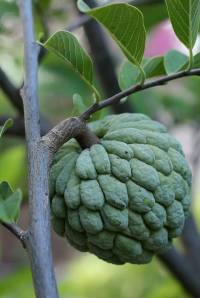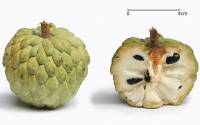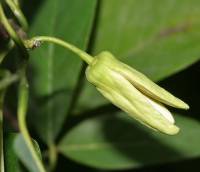Table of Contents
Sweetsop, Sugar Apple
Botanical Information
| Botanical Information | |
|---|---|
| Order | Magnoliales |
| Family | Annonaceae |
| Genus | Annona |
| Common Name | Sweetsop, Sugar Apple |
| Species | A. squamosa |
Maturity days
Planting Months
| Planting months | |||||||||||
|---|---|---|---|---|---|---|---|---|---|---|---|
| Jan | Feb | Mar | Apr | May | Jun | Jul | Aug | Sep | Oct | Nov | Dec |
| X | X | X | X | X | X | X | X | X | X | X | X |
Permaculture uses
| Permaculture uses | ||
|---|---|---|
| Usage 1 | Usage 2 | Usage 3 |
| Food_Forest | Fruit | |
Growing condition comments
| Growing Condition | Comment |
|---|---|
| Drought Tolerant | No |
| Humidity tolerant | Yes |
| Planting area | Ground |
| Sunlight | Full_sun |
Photos
Short comments
Grows in Townsville
General comments
A small branched shrub or small tree 3 metres to 8 metres tall similar to soursop.
Moderately drought-tolerant, requiring at least 700 mm of annual rainfall, and will not produce fruit well during droughts. A prolific bearer, and it will produce fruit in as little as two to three years. A five-year-old tree can produce as many as 50 sugar apples.
Natural pollinators include beetles (coleoptera) of the families Nitidulidae, Staphylinidae, Chrysomelidae, Curculionidae and Scarabeidae. In traditional Indian, Thai, and American medicine, the leaves are used in a decoction to treat dysentery and urinary tract infection.
In traditional Indian medicine, they are also crushed and applied to wounds. In Mexico, the leaves are rubbed on floors and put in hens' nests to repel lice. The diterpenoid alkaloid atisine is the most abundant alkaloid in the root.


